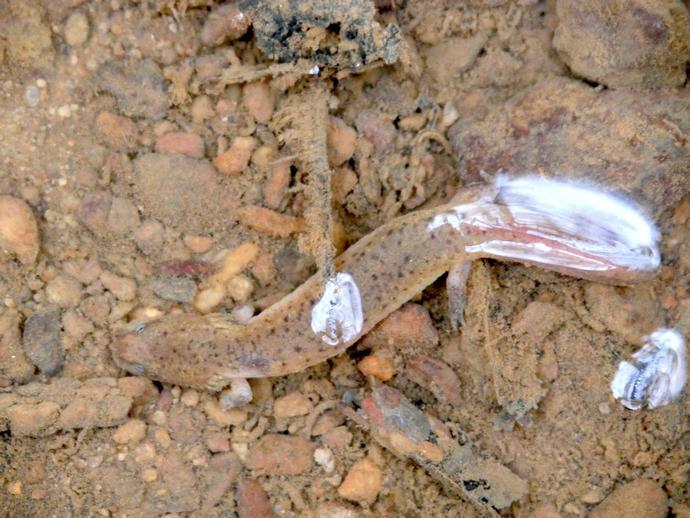March 29, 2020
Welcome to Aquatic Week! After having some success spotting aquatic critters while wading through the creeks near my house, I decided to do a theme week. From today through Saturday, every nature update will be about something you can find in the streams and ponds of southwest Virginia!
Many folks know that frogs (or at least a lot of species of frogs) don't emerge from their eggs fully-formed. Instead, they go through a larval stage, swimming around ponds and puddles as legless tadpoles. Salamanders, which are amphibians like frogs and toads, have a similar stage in their lives. Unlike tadpoles, larval salamanders have legs. They also have laterally flattened paddle-like tails to help them swim through the water and exposed gills that stick out from their necks. According to amphibian expert and biology professor Jason Gibson, this little guy is most likely the larval stage of a Northern red salamander (Psuedotriton ruber ruber), which is the same species as the bright orange salamander that we posted last week. According to the Virginia Herpetological Society, it takes nearly three years for a larval Northern red salamander to complete its metamorphosis into the terrestrial adult form. You can generally find these larval salamanders in small, clear streams and springs. Fun fact: If you try to take a photo of one without getting any glare off the water, it requires straddling the stream, bending yourself in half, and then nearly falling head-first into a creek. At least in my experience. #BenInNature
About this post: Social distancing can be difficult, but the next few weeks present a great opportunity to become reacquainted with nature. While he is working from home, Administrator of Science Ben Williams is venturing outdoors each day to record a snapshot of the unique sights that can be found in the natural world.
This post brought to you by VMNH Corporate Partner Everything Outdoors, LLC.

 Hours & Admissions
Hours & Admissions Directions
Directions

